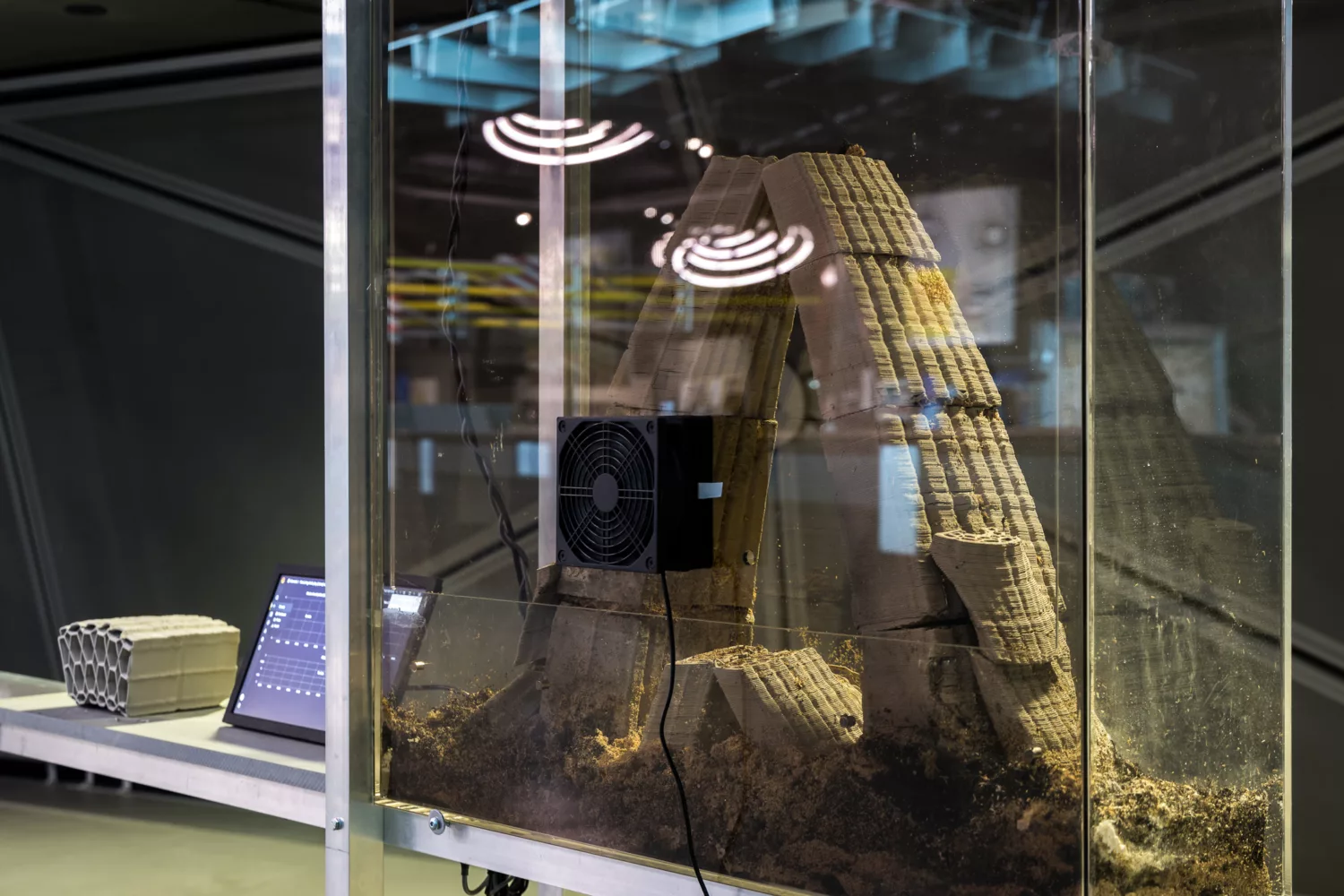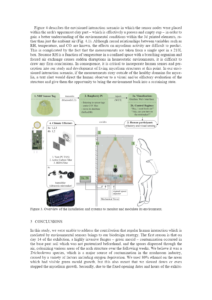The experimental architectural study The Living Arch combines biology, technology and design in the quest for healthy and comfortable spaces. It demonstrates the only partially explored potential of microorganisms to create a sustainable cycle. A mycelium structure grows in a 3D-printed clay-based frame that seeks to transfer this potential to a built environment. Mycelial threads grow within the fragile and porous support structure from which they generate chitin, statically strengthening it in the process. The mycelium acts as a thermal and acoustic insulation layer and, while it is growing, creates a healthy microbial climate, depending on influences such as temperature, humidity and spore type. In the HIVEOPOLIS project, this ‘architecture of well-being’ benefits honey bees – taken further, it could become part of human habitats.
In an increasingly urban world, we are replacing natural habitats of key species, such as honeybees, with artificial and bio-incompatible ecosystems. We hypothesize that functional diversity is missing and/or inhibiting a healthy lifestyle of honeybees. Materials that support honeybee health and natural microflora, such as living mycelial materials, could be seen as a breakthrough in hive design. We approach this ecological design issue from both a practical and theoretical standpoint, assuming social insects as co-occupants of the built environment. In HIVEOPOLIS, we want to create a beehive that re-assembles a possibly symbiotic relationship between honeybees and specific mycelial fungi species. This case study’s major purpose is to combine the structural properties of living mycelium with positive bioactive capabilities. The self-supporting habitat becomes a living agent for supporting the honeybee health by inhibiting the growth of harmful bacteria, producing immune-boosting metabolites that the bees consume, and biomonitoring pesticides and other toxic substances brought to the hive from polluted areas.

